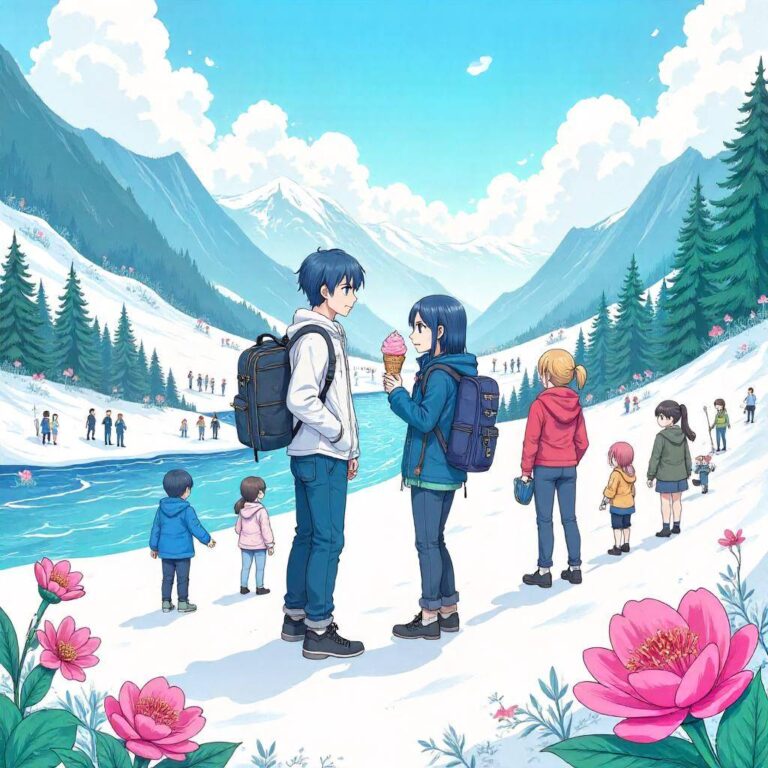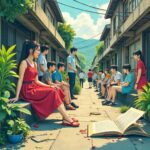A Comprehensive Travel Guide to Hokkaido: Sapporo and Beyond Hokkaido, Japan’s northernmost island, is a land of breathtaking natural beauty, rich culture, and culinary delights. It offers everything from winter sports to hot springs, making it a year-round destination for
travelers. In this detailed travel guide, we’ll explore Sapporo, the capital of Hokkaido, while also highlighting some hidden gems across the island. Whether you’re a first-time visitor or a seasoned traveler, you’ll find practical advice, cultural insights, and insider tips to help you make the most of your journey. Practical Logistics Getting There Hokkaido is accessible via various transportation methods: – By Air: New Chitose Airport (CTS), located about 50 km from Sapporo, serves as the main gateway to Hokkaido. Direct flights connect it to major cities in Japan, including Tokyo, Osaka, and Fukuoka. International travelers can also find flights from cities like Seoul and Taipei. – By Train: The Hokkaido Shinkansen connects the island to Honshu. The trip from Tokyo to Hakodate takes about 4 hours, and a transfer to Sapporo adds another 3 hours. – By Ferry: For the adventurous, ferries operate from the Japanese mainland to Hokkaido. The trip from Sendai to Hakodate takes approximately 18 hours, while the route from Aomori to Hakodate takes about 4 hours. Getting Around Once you arrive in Hokkaido, local transportation options abound: – Public Transit: Sapporo has an efficient subway system and an extensive bus network. A prepaid IC card (like Suica or PASMO) can be used for seamless travel. – Car Rentals: If you’re planning to explore beyond Sapporo, consider renting a car. Hokkaido’s scenic drives are spectacular, and you can easily access ski resorts, hot springs, and national parks. – Taxis: While more expensive than public transit, taxis are available and can be convenient for late-night travel or trips to locations not easily accessible by public transport. Cultural Insights A Taste of Local Life Hokkaido boasts a unique culture influenced by Ainu traditions, indigenous people of the region. This can be seen in local arts, crafts, and culinary practices. – Ainu Culture: Take the time to visit the Upopoy National Ainu Museum and Park in Shiraoi, which offers insight into the Ainu way of life. – Food Culture: Hokkaido is known for its fresh seafood, dairy products, and agricultural produce. Sapporo’s famous miso ramen and soup curry are must-try dishes, along with fresh seafood at the Nijo Market. Festivals and Events Hokkaido hosts numerous festivals throughout the year: – Sapporo Snow Festival (February): Famous for its massive snow and ice sculptures. – Yosakoi Soran Festival (June): A vibrant dance festival showcasing local culture. – Hokkaido Summer Festival (August): Celebrates the harvest with food stalls, local performances, and fireworks. Insider Tips 1. Try Local Specialties: Don’t miss out on Genghis Khan (grilled lamb), fresh crabs, and Hokkaido ice cream. Check out local izakayas for authentic dining experiences. 2. Venture Beyond Sapporo: While Sapporo is fantastic, make time for nearby attractions like Otaru, known for its picturesque canal and glassworks, or Noboribetsu for hot springs. 3. Visit the Flower Fields: In summer, the Furano and Biei regions bloom with colorful flower fields, perfect for photography and leisurely walks. Budget Considerations Accommodation – Hotels: Sapporo has a range of accommodations, from budget hostels (starting at ¥3,000 per night) to luxury hotels (¥15,000 and up). – Ryokan: Consider staying at a ryokan (traditional inn) for a unique experience, which typically includes dinner and breakfast. Prices can range from ¥10,000 to ¥40,000 per night. Food Costs – Meals at casual restaurants range from ¥800 to ¥2,500. – High-end dining can exceed ¥10,000 per person. Transportation Costs – A one-way subway ticket in Sapporo costs around ¥210. – A rental car can range from ¥5,000 to ¥10,000 per day, depending on the vehicle. Timing Recommendations Best Time to Visit – Winter (December to February): Ideal for snow sports and the Sapporo Snow Festival. Expect chilly temperatures, averaging -3°C. – Spring (March to May): Great for cherry blossom viewing and mild temperatures. Late April to early May is optimal for sakura. – Summer (June to August): Perfect for outdoor activities, flower viewing, and enjoying local festivals. Temperatures average 25°C, making it comfortable for exploration. – Autumn (September to November): Stunning fall foliage. Late October is the peak season for autumn leaves. Alternative Options While Sapporo is a highlight, consider these alternative destinations in Hokkaido: Hakodate Famous for its beautiful night view from Mount Hakodate and delicious seafood. Visit the historical site of Fort Goryokaku and the morning market for fresh catches. Furano and Biei Known for their gorgeous landscapes, especially during summer. The lavender fields in Furano are a photographer’s paradise. Niseko A world-renowned ski resort, attracting winter sports enthusiasts from around the globe. Known for its powder snow and vibrant après-ski culture. Step-by-Step Planning Advice 1. Decide on Your Travel Dates: Consider seasonal activities and weather conditions. 2. Book Your Flights: Look for the best deals to New Chitose Airport. 3. Create an Itinerary: Decide how many days you’ll spend in Sapporo versus other regions. A week is ideal for exploring Sapporo and surrounding areas. 4. Reserve Accommodations: Book hotels or ryokan early, especially during peak seasons. 5. Transportation: Plan how you’ll get around. Book rental cars or familiarize yourself with public transport options. 6. Pack Wisely: Hokkaido has diverse weather conditions. Bring layers, especially in winter, and comfortable walking shoes for exploring. Common Mistakes to Avoid 1. Underestimating Travel Times: Distances may be greater than expected; plan accordingly for travel between cities. 2. Not Trying Regional Foods: Hokkaido is famous for its cuisine; skipping local restaurants means missing out on a major highlight of your trip. 3. Ignoring Weather Conditions: Hokkaido can have sudden weather changes, especially in winter. Dress in layers and check forecasts regularly. 4. Avoiding English: While many in urban areas speak English, learning a few basic Japanese phrases can enhance your experience and interactions with locals. Hidden Gems in Hokkaido 1. Shikotsu-Toya National Park: A beautiful area featuring Lake Shikotsu and Mount Toya, perfect for hiking, hot springs, and stunning lake views. 2. Niseko’s Onsen: Explore lesser-known onsen (hot springs) in the Niseko area for relaxation after skiing or hiking. 3. Otaru Canal at Night: The picturesque canal comes alive with fairy lights in the evening, creating a romantic atmosphere away from the crowds. 4. Biei Blue Pond: Famous for its surreal blue waters, this natural phenomenon is stunning, especially in autumn. 5. Kushiro Shitsugen National Park: Explore Japan’s largest wetland area, home to diverse wildlife and stunning landscapes. Conclusion Hokkaido is a treasure trove of experiences waiting to be discovered. With its rich culture, exceptional food, and stunning landscapes, a trip to this northern island promises unforgettable memories. By planning carefully with this guide, you can navigate logistical challenges, immerse yourself in local culture, and uncover hidden gems that many travelers overlook. Whether you’re skiing in the winter or enjoying a summer flower festival, Hokkaido will leave you awestruck and eager to return. Happy travels!

Posted inJapan Trip


